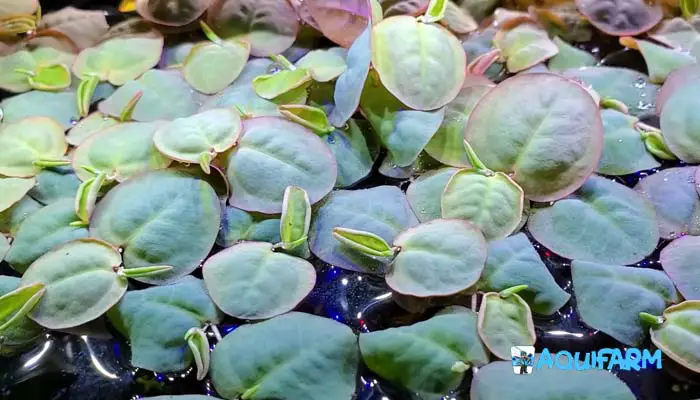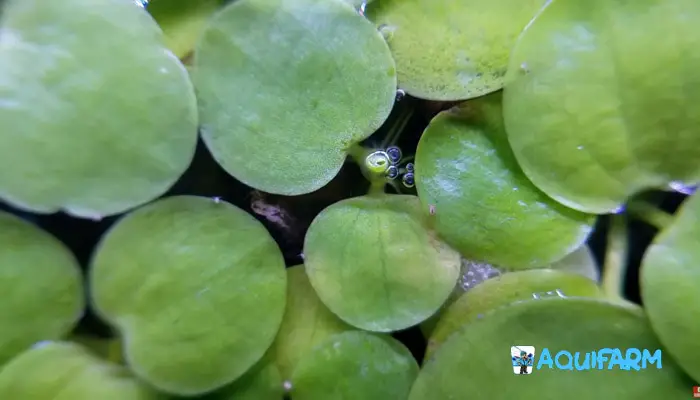Red Root Floater Vs Frogbit: All the Things in Detail
Red Root Floater and Frogbit are both floating aquatic plants commonly used in aquariums and ponds. the first one is red colored and the later one is green. Since both of them are floaters we are always in confusion about which one to pick.
Here, the Red Root Floater is a floating shrub with a red root. This is frequently used as an aquatic plant. It is known for its unusual red hue. Under a bright light setting, it looks so lovely like it’s something out of a fairy land.
On the other hand, a perpetual flowering plant known as amazon frogbit is a stunning green plant that is particularly well-liked by aquascapers. It is often cultivated in the aquarium as a natural barrier against light and heat.
Both red root floaters and amazon frogbits have a dense foliage so they work as a great cover for betta fish, shrimps and other fish that are shy naturally. So, red root floater vs frogbit; what’s my verdict?
Well, the red root floater has spherical, water-repellent roots and leaves that are known to turn red over time. It’s very easy to handle and requires little maintenance.
On the other hand, Amazon frogbit is famous for its extensive use in aquascaping due to being green. Because it reflects a natural view in the aquarium and can live in nearly any watery environment.
In this article, I will fill you in on all there is to understand about both my favorite freshwater plants.
Let’s get going!
Red Root Floater and Frogbit: Quick Comparison
You may feel overwhelmed by the wealth of information available on red root floater and frogbit. We have thus made a table that briefly summarizes all the variables. This will make things easy for you.
| Particulars | Red Root Floater | Frogbit |
| Origin | Amazon River Basin, South America | Central and South America |
| Aquascape | Floater | Floater. |
| Ideal Temperature | 22 °C – 26 °C (72 °F – 80 °F) | 18 °C – 26 °C (64 °F – 80 °F) |
| Ideal pH | 6.5 – 7.5 | 6.0 – 7.5 |
| Lighting Needs | High | Medium |
Let’s go into the specifics now that you are aware of some of the fundamental elements of the red root floater and frogbit.
Red Root Floater Vs Frogbit: Detailed Comparison
Both the red root floater and frogbit seem to be the same at first look. However, when you look more closely, you can distinguish between the two. So it’s crucial to understand the finer points while selecting the right one.
Origin
Both of its origins are in South America. They may look similar but their roots are actually different.
Red Root Floater

If you want to add some plants to your aquarium, Red Root Floater would be a perfect option. This is known to come from the Amazon River of South America.
The water is underneath the crimson roots as they hang. But the Red Root Floater’s top itself floats in the water. It is much like other aquatic plants like water lettuce and duckweed.
This plant is available on Amazon.
The Frogbit

Frogbit is native in Central America as well as South America. These locations were the first to see the plant’s natural dispersal. The Limnobium Laevigatum is often known as the Amazon frogbit.
It was originally appeared in a paper by a French naturalist in 1814. The Greek term “limnobios,” which means “living in a lake,” is whence the species gets its name.
Further ecosystems in Australia, Africa, and North America have been colonized by the frogbit. It’s often referred to as an exotic species. Among them, Tiger Striped Frogbits are a rare variety which has leaves that have stripes like tiger skin around its edges.
Also, their leaves are smaller in size and a little more compact compared to the common frogbits. The best thing is, under ideal conditions, the frogbits produce a new leaf almost every other day.
There is also another frogbit called American Frogbit native to North America. People might think they are the same but actually they are from another species. American Frogbit has round to oval leaves with a leathery texture which is much smaller than the amazon frogbits.
Also, their root system is feathery and can be longer in length than the amazon frogbits.This one is also found in water bodies but has a relatively slower growth making it very suitable for smaller aquariums.
When it comes to caring for red root floaters and frogbits, they have a lot in common. However, the two plants do vary from one another.
Red Root Floater
Red Root Floaters flourish in calm water as other floating plants do. This plant’s development may be hampered by an excessive water flow.
So if you want them to multiply faster, make sure the water surface is not agitated. Also, Red Root Floaters need high quantities of nutrients, particularly iron, to maintain their rapid development.
These plants are an excellent addition to a broad range of fish tanks. Besides, they will absorb heavy metal and extra nutrients through their roots.
The Frogbit
Frogbit is a hardy plant and a wonderful option for both beginners and experienced aquarists. Because it floats on water and thrives in a variety of water conditions. It is in fact simple to spread and grow.
They not only provide good vibes to the aquarium but also offer aesthetic attractiveness. Though it is a difficult plant to care for. But once you figure out the right condition for these and make some adjustments it will grow like a charm.
However, when you are growing them browning and burned leaves should be avoided at all costs as it kills the frogbit very quickly.
Ideal Temperature
Temperature is a vital fact for a plant in aquarium. That’s why we have to be concerned about this. Since maintaining a temperature range is crucial for both of these plants, having a heating device to control the temperature will prevent any kind of cold shock.
Red Root Floater
Red Root Floater likes a temperature range that’s typical for tropical freshwater aquariums around 22 °C to 26 °C. This range must be maintained because the plant will melt with excessive heat. To escape the heat of the sun, many fish keepers choose indoor lighting systems instead of natural sunshine.
On the other hand, if the temperature is much lower than this range, they will stop growing and lose their vibrant color. And If the temperature of the water drops too much the growth of red root floater slows down and it starts to deteriorate.
The Frogbit
Frogbit is a little more sensitive to colder temperatures as it can result in slower growth, yellowing of leaves, and also a decline in overall health. If there is a significant drop in the temperatures the frogbits can get very sick.
The same temperature parameters in the aquarium like the red root floater will work just fine. Since frogbits reside in tropical regions of the planet, It can tolerate a slightly broader range than red floaters but the plant is still most comfortable in warmer water.
Ideal pH
This is also a vital fact for a plant in an aquarium. That’s why we have to be concerned about this also.
Red Root Floater
For red root floater the pH should fall between 6.5 to 7.5. Otherwise, it will cause a bad effect on the plant.
The Frogbit
The frogbit plant also requires water with a pH of 6 to 7.5.
Lighting Needs
Every plant needs lighting to survive. But their need can be divided into different levels.
Red Root Floater
For the plant to develop correctly, it needs a lot of light. Neither too much nor too little light should be let in. Instead, the amount of light must be adjusted for either soft or hard water.
Soft water needs less light, and hard water requires more light. Actually,Red root floaters love more light according to many aquarists.
They usually start from being a green plant and under high light intensity their leaves gradually turn purple. If they are provided with the correct light setting, they will also produce tiny white blooms.
Given that, fish generally shun light exposure. You would ask whether such a high amount of light would indeed be beneficial for the fish. The thing is some fish that love high lighting conditions such as neon tetras, gouramis, danios, angelfish, rainbowfish etc are really comfortable with this plant.
On the other hand, this plant is ideal for generating shade over the water’s surface. It is best to use artificial illumination, such as LED lights since they don’t heat the tank.
The Frogbit
Frogbit glides on the aquarium‘s surface, thus lighting won’t be a problem for it. It does well in light levels ranging from moderate to high, even it does well in low light too.
Use filled T5 or T8 bulbs, however, you may also use LED lights. Because I have done it with success for many years. You don’t have to keep the lights on all of the time.
It’s a useful plant that can adapt to whatever cycle you’ve set up for your aquarium inhabitants.
The only issue to be concerned about is extreme heat. Avoid placing your lights too near to the frogbit to avoid burning the leaves.
Read More-
Final Verdict
We have discussed all of the aspects of red root floater and frogbit. Both of them are quite similar. And with the right amount of care both amazon frogbit and red root floater will thrive in your aquarium without a doubt!
Maintaining the ideal water parameters such as temperature, pH, Light intensity in the aquarium for both amazon frogbit and red root floaters is very crucial for their survival. You can choose the one that suits your environment by comparing the detailed comparison that we provided.
FAQs
How Quickly Can Red Root Floater Grow?
Plants with red root floaters grow at a moderate to rapid pace. It may spread swiftly in a suitable body of water.
Is CO2 Required For Red Root Floater?
It doesn’t need more CO2 added to it. Red Root Floater will gain from supplementation such as flourish, nitrogen, iron, as well as other plant nutrients.
Can Frogbit Be Used With Betta Fish?
Yes, Frogbit grows significantly bigger than other plants. This makes it simpler to care for and weed in Betta fish aquariums.
Conclusion
We hope that now you have no confusion regarding red root floater vs. frogbit. It’s important to provide these plants with conditions that mimic their natural tropical habitat. Only this way they will be able to thrive in our aquarium.
No matter whether you have picked a red root floater or a frogbit, try to regularly monitor the water temperature in your aquarium or pond. Both plants can contribute to a healthy aquatic environment in your tank helping your betta fish and shrimps to grow and increase the aesthetic beauty at the same time.
For me, both red root floaters and amazon frogbits are a great pick. You can definitely pick any of them or even both if you want to create a natural heaven in your tank. Have a great day!
- 7 Reasons For Anubias Leaves Turning Yellow [Solution] - February 3, 2024
- Types & Sizes Of Aquarium Explained: Guide To Pick The Best One - January 27, 2024
- 15 Best Carpeting Plants For Aquascaping -Beginner’s Pick - January 11, 2024

